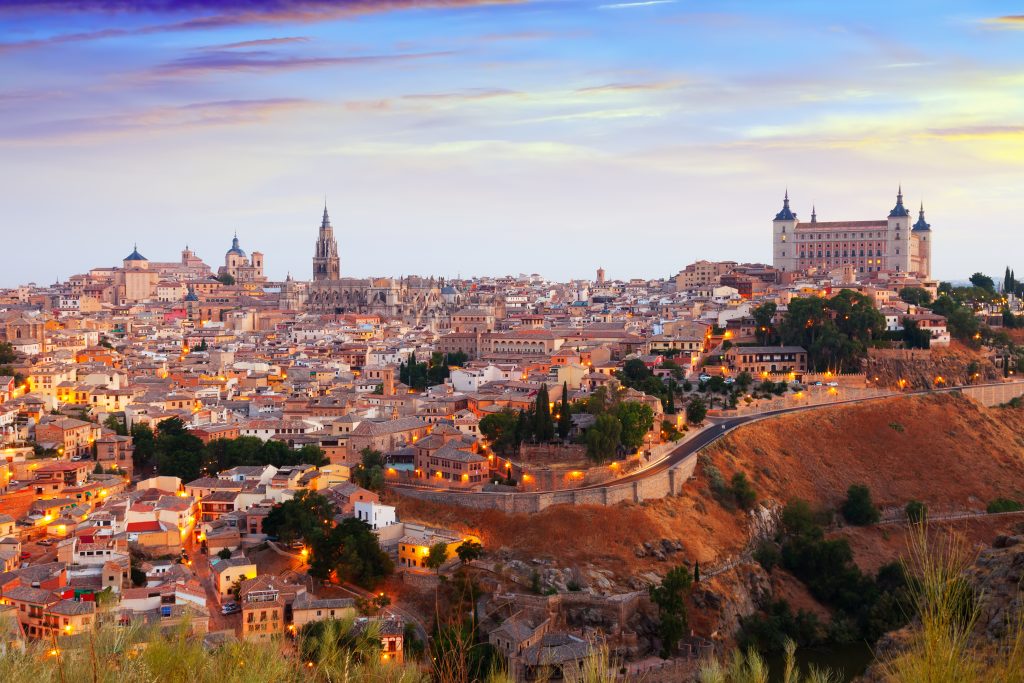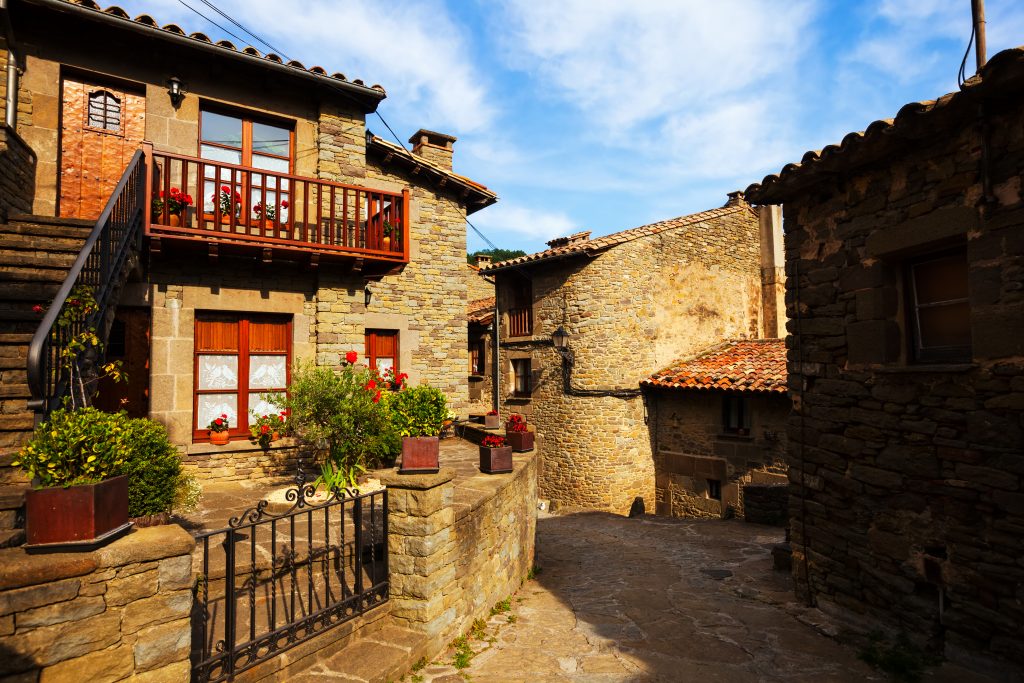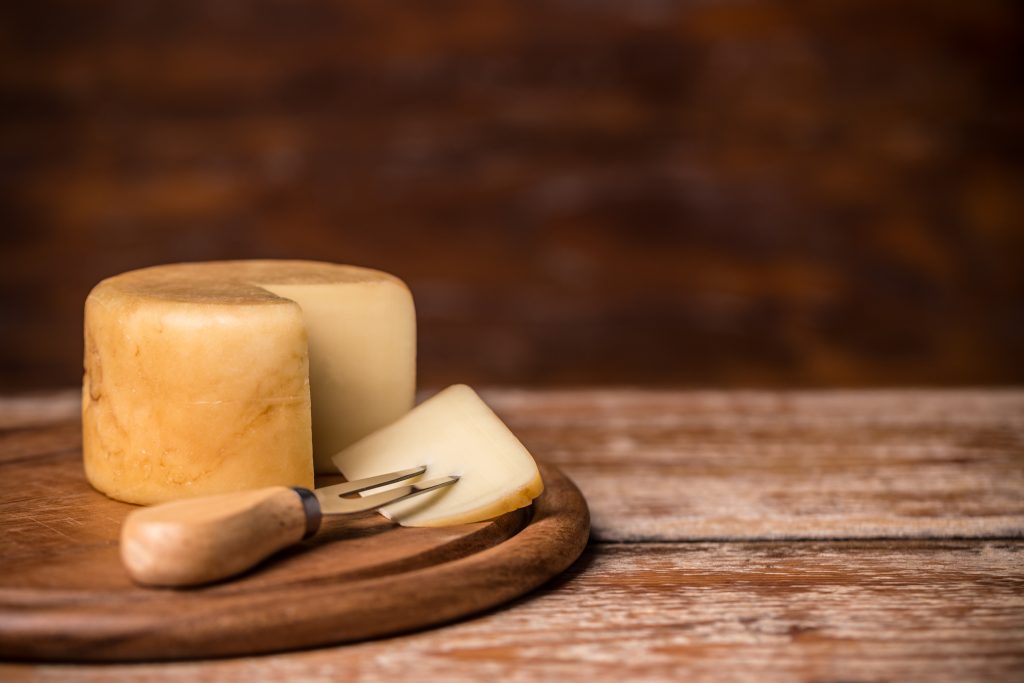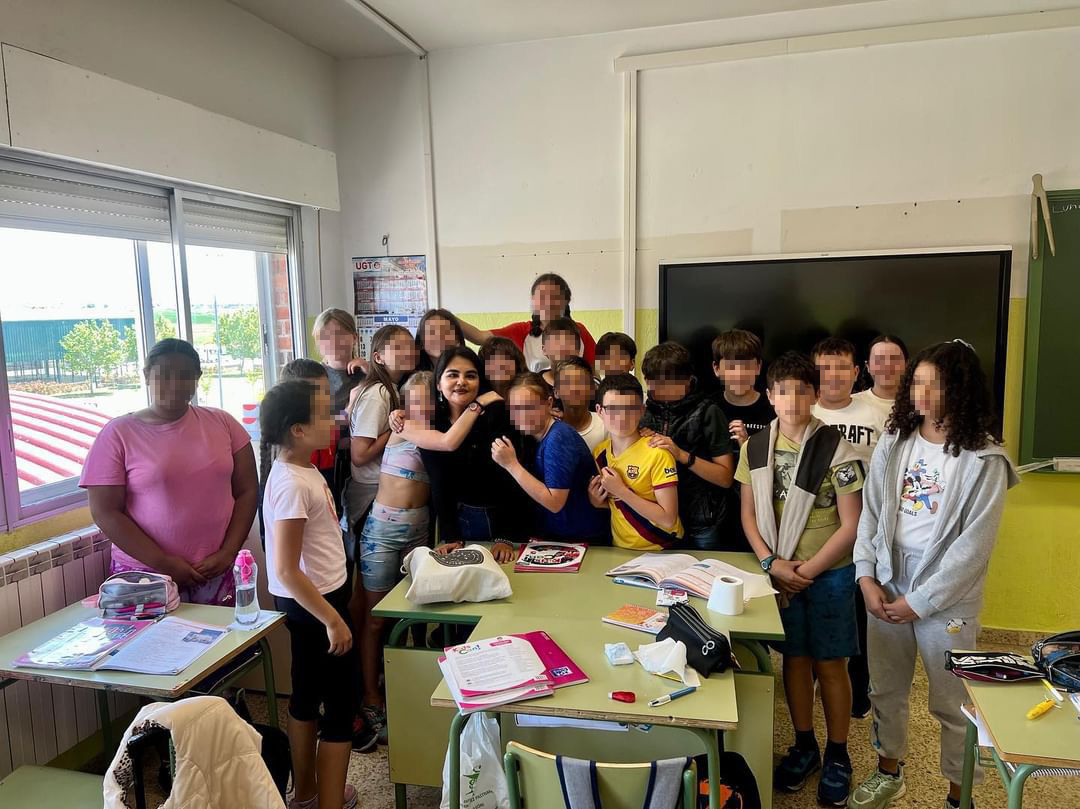By ConversaSpain.
“In a village of La Mancha, the name of which I have no desire to call to mind…” are the first words written by Miguel de Cervantes in his famous book “El Ingenioso Hidalgo Don Quijote de La Mancha.” Almost everyone that knows this novel has heard these words, but where were they written? Where are the different places that hosted Don Quixote? Let’s follow his journey while enjoying Castilla-La Mancha! Let’s follow the route of Don Quixote!
Don Quixote’s Route on A Map of Today’s Castilla-La Mancha
Take your lance and shield and enter de lands of Castilla-La Mancha -full of mills and wheat fields- through which the knight wandered with Sancho Panza, his faithful squire. In order to do this, though, you will have to imagine yourself being in the 17th Century. Your horse might be a car, the wine may not be that old, and some places might have changed a little bit, but Don Quixote’s essence prevails. Be ready to be his new, 21st century, Sancho Panza!
Before we start our journey, it is important to realize that Don Quixote is not a travel book. Having in mind that Miguel de Cervantes was a storyteller, he was more interested in the imaginary world than the real one. So, even though there are places that, without a doubt, Cervantes knew and from which he drew his inspiration, there is a “deliberate territorial ambiguity” in Don Quixote. Nevertheless, let’s get to it!

Where Should Don Quixote’s Journey Begin?
The Beginning of the Route: Toledo, Castilla La Mancha’s Capital
It is up to you to decide what places to visit, but Toledo is a must. The novel’s full name is “El Ingenioso Hidalgo Don Quijote de La Mancha” for a reason, and how could we understand him without visiting La Mancha’s capital? Even if you have not read Miguel de Cervantes’ book, this city deserves a visit no matter what. You can walk around its walls while imagining yourself under attack; hear the noise of the Tajo river while crossing its bridges or get to know and understand El Greco -who died in Toledo and lived there at the same time as Cervantes-. Who knows, they could have even been friends!

Campo de Montiel: Mentioned 5 Times in “Don Quixote”
Even though Toledo is a great city, Don Quixote spent most of his time in the fields of Castilla La Mancha. Most specifically in the Campo de Montiel, which Miguel mentions up to 5 times throughout the book. This area, due to its geographical location -connected to the Meseta, Andalucía and Levante- was a transitory area. Due to this, it has not suffered a lot of changes, so the steps and footprints of El Quixote can still be appreciated.
However, this is not the only regional area that Miguel mentioned. “In this, they discovered 30 or 40 windmills that are in that field…”. But, what field? He could be referring to the town of Campo de Criptana in Ciudad Real, known for its windmills. The area had up to 34 of them -it was called Sierra del Viento-. Even though not all of them are still there nowadays, there are up to 10 in great condition. But be aware that, sometimes, people mistake them for giants, or at least Alonso Quijano -Don Quixote’s actual name- did. Do not try to fight them!

Inside the Cueva de Montesinos, a Stop on the Route of Don Quixote
But these fields hide another important place for the novel. In between these campos one can find la Cueva de Montesinos. Don Quixote mentions to Sancho Panza the different visions that he experienced inside (chapters XXII-XXIII, Part II). When he entered this cave he fell asleep for an hour. However, he thought he had been there for three days. He dreamed of Merlin and his enchantments while also meeting Montesinos, a recurrent character from chivalry books at the time.
The Cueva de Montesinos is a popular tourist attraction. However, if you decide to descend to the cave, it would be best to do it accompanied by guides. It is also recommended to be equipped with flashlights and comfortable shoes, as there are some difficult and dangerous steps.
Small Towns -or Pueblos- You Must See When Following the Route of Don Quixote
We could not talk about Don Quixote, Castilla-La Mancha, or even Spain without mentioning its pueblos. Pueblos are like small towns, and almost everyone in Spain belongs to one of them. Before people moved into urban centers, they lived in these little towns where they had access to everything they needed. Nowadays, the new generations still consider themselves part of those pueblos and visit them quite often. It is actually common for people to ask “what pueblo are you from?”

Don Quixote himself traveled through many of these pueblos with Sancho Panza. Since we are his new, modern and 21st century Sancho, we should visit them with him!
El Toboso
Aldonza Lorenzo’s name might not sound familiar to you, but she was the woman Don Quixote loved. Instead of using her actual name, he decided to call her Dulcinea del Toboso, a name more appropriate considering how much he loved her. Dulcinea comes from the word dulce, which means sweet.
When someone had “de” or “del” in their last name, it usually meant that they were from the specific area that goes after those words. For example, Don Quixote de La Mancha. In this case, Dulcinea del Toboso was from a small town called Toboso. In this pueblo, we can find a route that begins at Dulcinea’s house and takes you through different places mentioned in the novel. There is also a sculpture of the hidalgo knight kneeling in front of his beloved Dulcinea.

Villanueva de los Infantes
This blogpost, just like Don Quixote’s novel, started by saying he did not want to remember the name of a place in Castilla-La Mancha. However, we do. Some experts have assured that the name of the village that Don Quixote had no desire to call to mind is Villanueva de los Infantes. We do not know why he did not want to remember it, since it has a roman road, beautiful bridges from this period and, nowadays, a sculpture of Alonso and Sancho.
Maybe he would want to go back in the 21st century but, since he can’t, we will for him!
What Pueblos Where Visited by Miguel de Cervantes?
But, in order to understand Don Quixote we also have to understand its creator, Miguel de Cervantes. A lot of the places that we have already named are part of the novel because Cervantes was influenced by them. Some others might not be represented in the book but are crucial to Miguel’s life.

Argamasilla de Alba: A Mandatory Stop on this Quixotic Route
An ancient tradition, recorded by the first commentators on Don Quixote and biographers of Cervantes, affirms that in the Casa de Medrano, located in Argamasilla de Alba, Miguel was imprisoned and, supposedly, started writing his novel “El Ingenioso Hidalgo Don Quijote de La Mancha.” This house can be visited nowadays. Who knows, you might come up with a great story there… or you might be imprisoned!
Esquivias
To finish-up this list of places, we have the village of Esquivias. But we would not be the only ones to walk its streets: Celts, Romans, and Visigoths have inhabited this town. So did Miguel de Cervantes, and the house that he stayed at can also be visited: a typical Castilian house with its winery, stable, cellar and courtyard.
Our Journey Has Ended, But Castilla-La Mancha Has Not!
There are so many other places to visit that Don Quixote probably walked through, however, we cannot mention them all. This is not a bad thing though, because it means you can continue discovering Castilla-La Mancha, trying its exquisite wine and, of course, tasting the very well-known Manchego cheese.

What other places in Castilla La Mancha should we stop by? Let us know where you go next, and remember to take Don Quixote with you!





